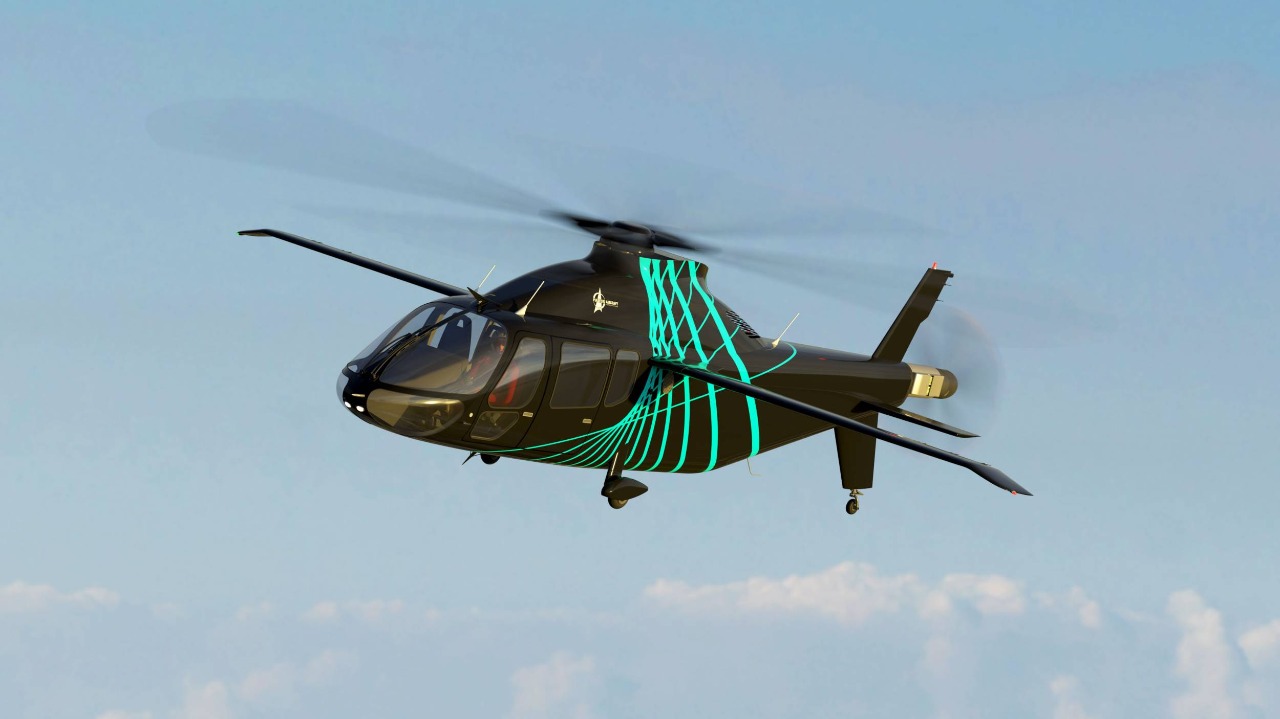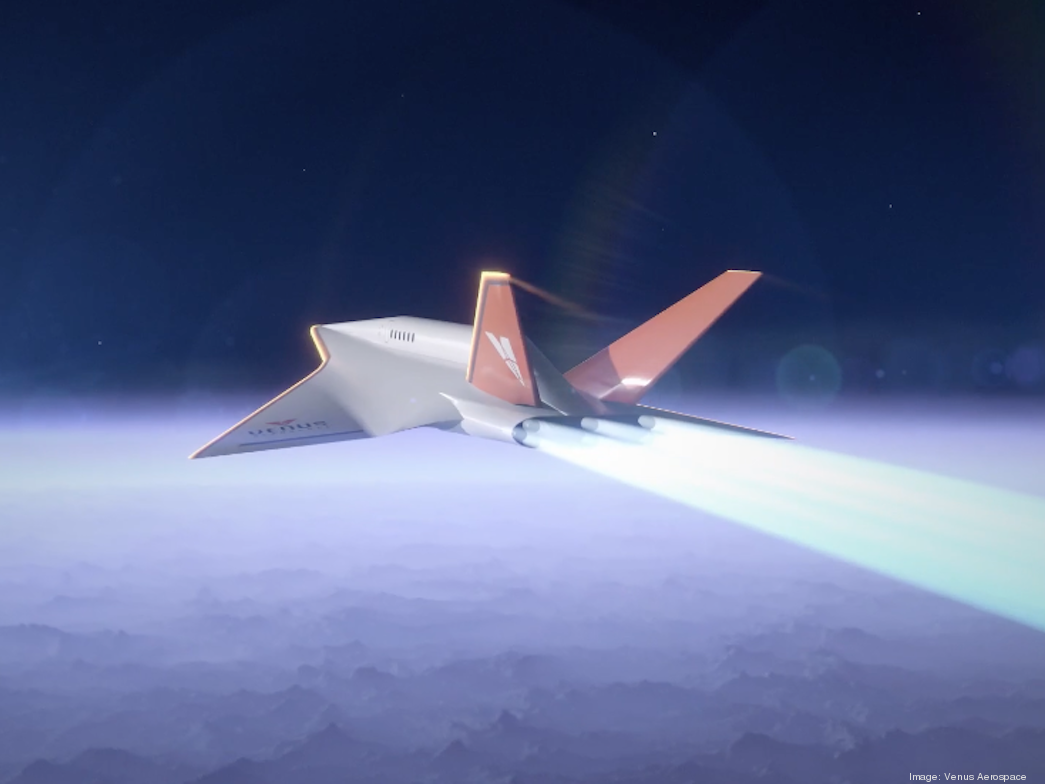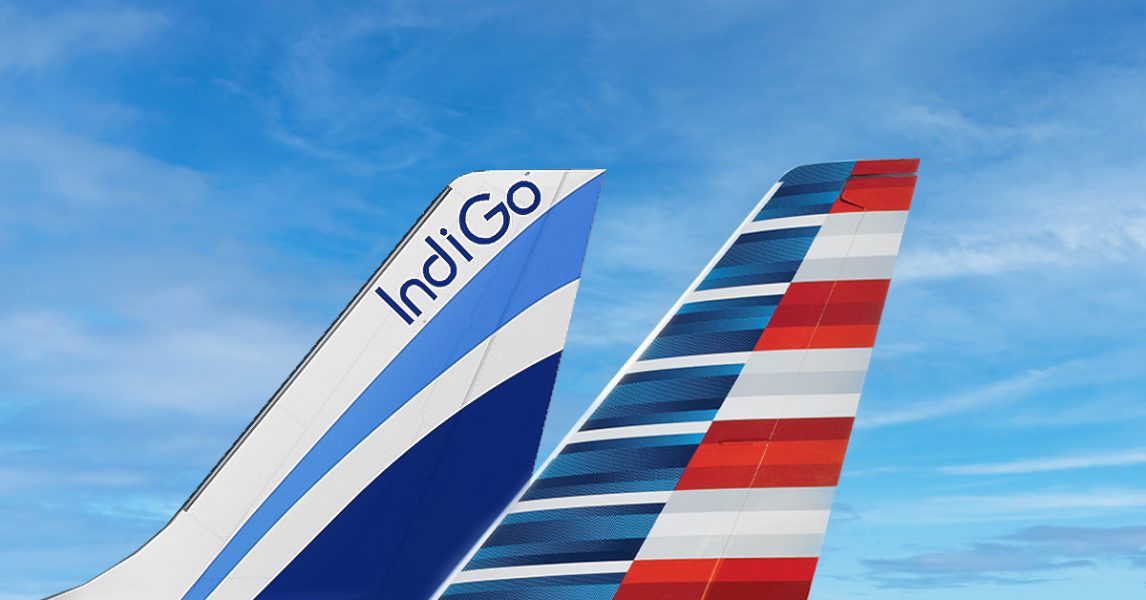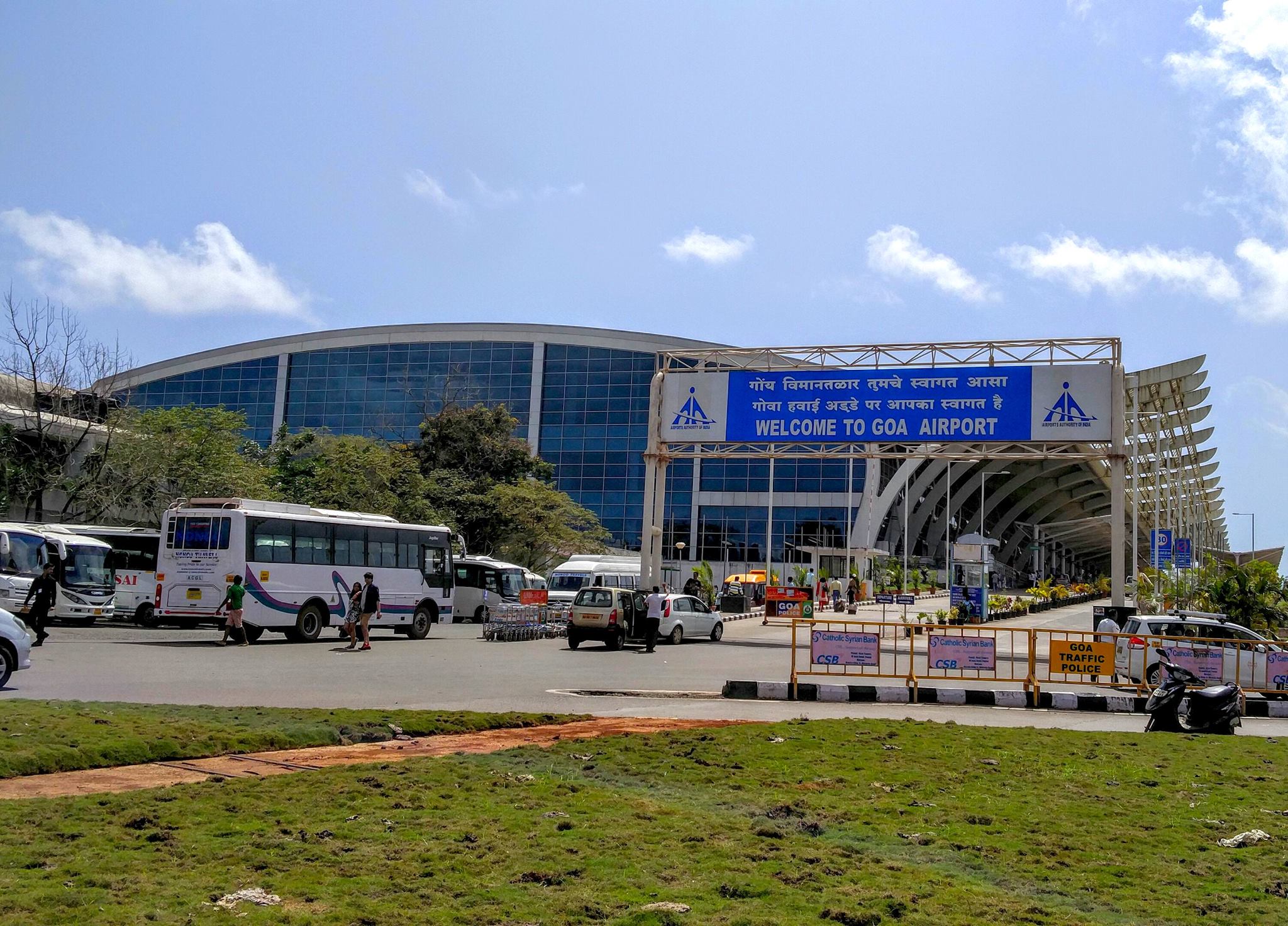Air India Express plans massive international expansion in the next 5 years
Radhika Bansal
11 Jun 2022
Air India Express is eying more international connections from second and third-tier cities in India as part of a “huge” expansion plan over the next five years.
Chief of Commercial Tara Naidu said the LCC intends to rapidly grow its network under new owner Tata Group, maintaining its strategy of offering inter-regional routes within a six-hour stage length.
Speaking at Routes Asia 2022 in Da Nang, Vietnam, Naidu outlined 30 countries that are being explored by Air India Express, including Cambodia, China, Indonesia, the Philippines, Turkey and Vietnam.
Air India Express plans massive international expansion in the next 5 years
“There are some markets where there is no direct connectivity, which is strange because they are huge markets,” she said. “We believe it’s going to be a win-win for us—it will stimulate tourism growth in both directions and ease business connectivity.”
Air India Express currently serves 19 destinations in India and 14 international points, with aircraft bases at Cochin (COK), Delhi (DEL), Kozhikode (CCJ), Mangalore (IXE), Mumbai (BOM), Thiruvananthapuram (TVR) and Tiruchchirappalli (TRZ).
Unlike its parent Air India, which operates a hub-and-spoke network, Air India Express flies high-density point-to-point routes, targeting markets with large flows of migrant workers, as well as VFR and leisure traffic. Dubai, Sharjah and Muscat are among its largest international destinations by capacity.
Air India Express flies high-density point-to-point routes from Indian cities to places like Dubai, Sharjah, and Muscat
Naidu said Air India Express hopes to add more aircraft shortly to its current fleet of 24 Boeing 737-800s. She added that it also wants to implement new interline and codeshare agreements with other carriers.
“This will give us additional market reach and access to market segments we wouldn’t have otherwise,” Naidu explained.
Tata completed the acquisition of the Air India group from India’s government in January and in April began the process of consolidating Air India with domestic carrier AirAsia India.
Air India Express hopes to add more aircraft shortly to its current fleet of 24 Boeing 737-800s
Air India Express is a wholly-owned low-cost subsidiary of Air India. The carrier, which was established in 2004, operates a network that covers domestic destinations in India as well as international destinations in Asia and the Middle East.
ALSO READ - Air India intends to purchase a 100% stake in AirAsia India; Tatas to relocate all 4 airlines to Gurgaon
In April, Air India sought approval from the Competition Commission of India (CCI) to acquire the Bengaluru-based AirAsia India, in which the Tatas have a majority stake at 83.67%.
While there have been no formal announcements, the merger – if and when that happens – is speculated to support Air India Express in furthering its future ambitions for regional expansion.
(With Inputs from Routesonline)
Read next
American Airlines and IndiGo have launched a codeshare agreement that allows the former to sell seats on the latter's flights operating on Delhi-Bengaluru and Delhi-Mumbai routes, a statement said on Thursday, June 9.
ALSO READ - Codeshare agreement signed between IndiGo and American Airlines
"American and IndiGo plan to expand the codeshare shortly to include more than a dozen additional destinations in India (in addition to Bengaluru and Mumbai)," it said.
IndiGo officially launches codeshare agreement with American Airlines
American Airlines currently operates flights on the New York-Delhi route only. American Airlines and IndiGo had in September 2021 announced that they are entering into a codeshare agreement.
The agreement will place American’s code on 29 of IndiGo’s domestic routes in India, providing a convenient option for American Airlines customers arriving on the carrier’s new Bengaluru (BLR) and Delhi (DEL), India, flights.
"IndiGo is a premier Indian carrier and through our codeshare agreement, customers can book travel on IndiGo via Delhi to and from two of India's most popular destinations, Bangalore and Mumbai."Anmol Bhargava, Vice President of Global Alliances and Partnerships, American Airlines
The codeshare, which will require U.S. and Indian governments’ approvals, is expected to begin in October, as American Airlines launches a new service between New York (JFK) and DEL on October 31 and between Seattle (SEA) and BLR on January 4, 2022.
“We’re eager to add IndiGo as our trusted partner in India. Whether our customers are traveling for business or pleasure, this new partnership makes it easy to reach all four corners of India. Today we’re adding 29 new routes to our map as a result of this agreement, providing customers with even more options around the globe."Vasu Raja, Chief Revenue Officer, American Airlines
As the codeshare agreement begins, members of American’s AAdvantage® loyalty program will earn miles when traveling on American codeshare flights operated by IndiGo.
Customers who aren’t yet members of the award-winning AAdvantage program can enroll online and enjoy immediate benefits such as Group 6 boarding on flights operated by American.
IndiGo already has codeshare agreements with Qatar Airways, Turkish Airlines and Air France-KLM airlines.
Customers traveling in American’s Flagship® Business cabin on DEL–JFK or BLR–SEA will have access to IndiGo partner lounges in their originating city where they can relax, unwind and enjoy hot food, beverages, Wi-Fi and more.
ALSO READ - Air France-KLM and IndiGo officially launch their codeshare agreement
IndiGo, India's largest airline, already has codeshare agreements with Qatar Airways, Turkish Airlines and Air France-KLM airlines.
ALSO READ - IndiGo and American Airlines announce codeshare agreement| A brief history
Read next
Airports Economic Regulatory Authority (AERA), has hiked Dabolim/Goa International Airport’s aeronautical charges — which are levied on airlines, which accordingly decide airfares — and user development fees (UDF) that are paid directly by flyers.
Now flying out of Goa will be costlier from July 1 till next March and then the air ticket prices will get progressively more expensive every fiscal till April 2025.
AERA hikes Goa Airport's aeronautical charges; tickets get costlier
Coupled with high airfares due to a record high jet fuel prices and a weak rupee, this will mean a costlier trip to one of India’s most loved holiday paradises.
According to the AERA tariff order, the UDF for departing domestic and international passengers will rise from the present INR 301 and INR 604 (taxes extra) respectively to INR 375 and INR 695 from July 1, 2022, to March 31, 2023.
The UDF will be INR 430 (domestic) and INR 760 (international) between April 1, 2023, and March 31, 2024. In FY 24-25, the same will be INR 495 (domestic) and INR 825 (international). And in FY 25-26, the charges will be INR 570 (domestic) and INR 900 (international).
The authority has decided to allow a one-time increase of 30% in domestic and international aircraft parking charges this fiscal starting from July 1, 2022, and an increase by 5% thereafter year-on-year till FY 2025-26.
“Airports Authority of India (AAI) is entitled to recover INR 967.7 crore (from Goa airport). The present value of total projected aeronautical revenues based on the authority’s parking and UDF charges is INR 752.3 crore, resulting in a net shortfall (under-recovery) of INR 215.4 crore. The authority has decided to carry forward the under-recovery of INR 215.4 crore to the fourth control period, with a view to not burden the airport users, who are already suffering from the Covid-19 pandemic’s impact, further with excessive tariffs at this juncture, which shall act counterproductive to the revival of the aviation sector.”Goa airport tariff order, Airports Economic Regulatory Authority (AERA)
The AERA had a tough balancing act as on the one hand are Covid-hit airlines that oppose any further hike in operating costs or UDF to ensure reasonable fares help people return to flights.
And on the other are airport developers who need to sustain operations, and incur Capex amid the sharp drop in footfalls since March 2020. The Federation of Indian Airlines (FIA, which has major Indian carriers as its members) had opposed the proposed hike at Goa.
“It is in the interest of all the stakeholders that the proposed tariffs be reduced to encourage middle-class people to travel by air, which will help in sharp post Covid-19 recovery of the aviation sector.”
"Financial condition during the Covid-19 pandemic has deteriorated to a great extent. The AAI has incurred a loss of INR 1,962 crore in FY 2020-21. It has resorted to borrowing from the market to finance its capital as well as opex (operational expenses). Although it is expected that the aviation sector is likely to bounce back to pre-covid level by FY 2023-24. But for AAI's current survival, it is required to improve cash flows.”Airports Authority of India (AAI)
Goa International Airport, also known as Dabolim Airport, is located in the village of Dabolim in Goa, India. Goa is a popular tourist destination and the airport is served by over 20 scheduled and charter airlines. The airport sees significant international charter traffic in the northern winter from the European airlines.
(With Inputs from The Times of India)
Read next
The Piasecki PA-890-world's first hydrogen-powered helicopter enters the eVTOL bandwagon
Prashant-prabhakar
10 Jun 2022

Frank Piasecki, an American engineer and helicopter aviation pioneer, is best remembered as the father of the tandem-rotor helicopter. He pioneered tandem-rotor helicopter designs and created the compound helicopter concept of vectored thrust using a ducted propeller.
Frank Piasecki | Piasecki Aircraft Corporation
What's new is that two new designs, that borrow from his analysis of automobiles of the 1950s and 1960, may soon see the light of the day and find a place in the emerging civil electric vertical takeoff and landing (eVTOL) and utility unmanned aerial systems military markets.
Piasecki designed and flew the second successful helicopter in the U.S., the PV-2, in 1943 and is also credited with inventing the so-called "Flying Banana"-a tandem-rotor helicopter capable of carrying large cargo loads or troops into combat. Piasecki’s tandem-rotor design laid the groundwork for many of today’s successful helicopters, including the Boeing CH-47 Chinook.
The PA-890 eVTOL aircraft
VEA Aviation PA-890 | eVTOL news
Designed for a variety of missions including Emergency Medical Services (EMS), delivery of high-value On-Demand Logistics (ODL), On-Demand Mobility (ODM) personnel air transport; and many others, the PA-890 eVTOL aircraft is an all-electric-powered Slowed-Rotor Winged Compound helicopter.
The eVTOL features a large four-bladed main rotor, a variable incidence wing that rotates up to 90 degrees to minimize download for efficient hovering and swivelling tail rotor that provides anti-torque and yaw control. As the PA-890 transitions to forward flight the wing rotates to a horizontal position providing lift to offload the rotor and the tail rotor swivels to provide efficient forward propulsion. With lift and thrust demands on the rotor relieved, the rotor RPM is slowed. The combined effect is a dramatic increase in efficiency and range while decreasing noise.
The fuselage is touted to be made using a variety of materials, including carbon fibre.
There are a lot of novel eVTOL configurations proposed out there that will require the development of a new FAA certification basis. This represents a significant risk. We are able to meet our design objectives with a compound helicopter that can be certified under existing Part 27 conventional helicopter standards. So, given the lower risk of the certification process and the simplicity of the design, in our minds, it reduces costs both in terms of acquisition and operations” by using a design that more closely parallels that of a conventional helicopter, albeit a compound oneJohn Piasecki- the company CEO, said
The aircraft features seating for five and a large baggage compartment with multiple configurations for cabin size and layout.
It has been designed for FAA certification under existing Part 27 standards, reducing the technical, cost and schedule risk of bringing this product to the commercial market relative to more novel configurations requiring a unique certification basis.
According to John, electric motors are very easily operated at different RPMs and hence Electric Propulsion makes it demonstrably easier to control main rotor speed and achieve noise reduction. He further added that the company rejected a battery-only electric design based on performance and a hybrid propulsion system based on cost, given the low associated energy density and limited life cycles.
Hybrid turned out to be excellent from a performance and cost point of view, but it still had a residual carbon footprint. Hydrogen fuel cells offered double the cost-saving and have zero carbon footprintJohn
Currently, various hydrogen supply scenarios for the PA-890 are being explored. Piasecki signed an agreement with California-based HyPoint to collaborate on the development of turbo air-cooled, high-temperature hydrogen fuel cell systems, last August.
HyPoint and Piasecki Aircraft announce collaboration for the development of Hydrogen Fuel Cell System | Representative | TransportUP
The company hopes to have a prototype flying in the 2024-2025 timeframe and is targeting certification for 2027.Once we get economies of scale, the fuel cell cost is going to come way down. The target for overhauls of the PA-890's fuel system is up to 20,000 hoursSaid John
https://www.youtube.com/watch?v=fH8Qqvcy524
As for the specific industrialization strategies for the PA-890, they are still under discussion.
SOURCE(s)
COVER: ainonline
Read next
Tata SIA Airlines Ltd., which operates as Vistara, is planning to expand its network from Mumbai, having established operations with Delhi as its hub over the last 7 years.
The full-service airline currently operates more than 50 daily flights from Mumbai and five international flights. This number is expected to be scaled up when more aircraft join the fleet.
“Mumbai is of high strategic importance for Vistara and is the second-biggest hub for us after Delhi. We have already increased daily departures from 38 to 50 from Mumbai since the pandemic. It has also helped us in developing a dense feeder network enabling convenient international connections for our customers.”Vinod Kannan, CEO, Vistara
International destinations served from Mumbai include Singapore, Male and Dubai, while the Jeddah service will start from August 2.
More short-haul and long-haul sectors were in the works, including to Europe, he said. Currently, Vistara flies to Frankfurt, Paris and London from Delhi.
ALSO READ - Vistara begins nonstop flights from Delhi to Paris
Vistara plans to expand its hub to Mumbai
The carrier is also planning to enhance its international operations from Mumbai mainly to countries in the Gulf where yields are better.
The airline currently has a fleet of 53 aircraft, including two wide-body Boeing 787 Dreamliners. The fleet strength will increase to 70 by the end of 2023, Mr. Kannan said.
Recently, Vistara celebrated another milestone – expanding to a 50 aircraft strong fleet. The latest addition VT-TVE (an Airbus A321neo) was unveiled at Delhi's Indira Gandhi International Airport, with some of the company's top bosses, including CEO Vinod Kannan, in attendance.
https://twitter.com/airvistara/status/1534826772415807488
Vistara is scheduled to receive four more Dreamliners, which are expected to be deployed from Delhi and Mumbai in long-haul sectors. The Gulf sector will be served by narrow-body aircraft including the A321neo.
ALSO READ – Vistara in talks with lessors to fill the long-haul gap in the wake of B787 delays
The airline plans to lease 4-5 Boeing Dreamliner planes, as the American plane maker is running slower-than-expected on deliveries. Vistara is waiting to receive four aircraft from Boeing’s 787 production line, but deliveries have been frozen globally since May 2021 due to quality-control shortcomings.
The airline currently has a fleet of 53 aircraft, including two wide-body Boeing 787 Dreamliners.
ALSO READ - Vistara plans to collaborate with Air India on procurement of parts
From the time the Tata group acquired Air India by the Tatas, speculation has been rife that Vistara’s operations would be integrated under Air India, which is a much stronger brand. But no announcements on the matter have been made.
ALSO READ – Vistara may merge with Air India, a decision expected by end of 2023
(With Inputs from The Hindu)
Read next
LA to Tokyo in an hour? Venus Aerospace unveils "Stargazer"- a conceptual, zero-emissions hypersonic aircraft
Prashant-prabhakar
10 Jun 2022

Founded by Sarah “Sassie” Duggleby and Dr. Andrew Duggleby in 2020, Venus Aerospace is an early stage, deep tech, Houston based company, that aims to develop a Mach 9 hypersonic aircraft that will fly passengers around the world and back home in time for dinner, or so what the company claims.
Representative | autoevolution
Pushing the boundaries of high-speed transportation, the team at Venus comprises of a dedicated and experienced team of aerospace, military and research and development veterans. As mentioned on the website, the team is maturing its three main technologies:
a zero-emission next-generation rocket engine- a patented rotating detonation rocket engine (RDRE)An innovative aircraft shape which will the ability of the spaceplane to take off from existing spaceports, using existing infrastructure, andAn active leading-edge cooling system
Representative | Startup Weekly
Although Venus hasn’t released images of the design of its 12-passenger airliner, it has issued a release stating the $20 million Series A funding it has raised in conjunction with Prime Movers Lab. Apparently, the press release boldly states that “Venus Aerospace is building a zero-carbon emission spaceplane that will enable one-hour global travel.”
"Stargazer"- a hypersonic hybrid
Gizmodo
The operational architecture of the conceptual stargazer could be compared to that of a hybrid car where the combustion engine and electric drivetrain work in parallel. The stargazer will likely feature two propulsion systems — a conventional jet engine and a rocket engine.
A novel propellant combo demo | Venus Aerospace
How is it any different from Hermeus’ air-breathing Turbine-Based Combined Cycle Propulsion (TBCC) engine approach?
Hermeus Quarterhorse | Representative | americanaerospace
According to Sarah and Andrew Duggleby, the stargazer is largely intended to integrate into the existing air transportation infrastructure. Capable of taking off from a standard runway at LAX, the hypersonic craft will use its jet engine to climb to a nominal conventional cruise altitude (35,000 feet or thereabouts).
Thereafter, the jet will be shut down and its inlet/exhaust would be closed off and the liquid-fueled rocket engine will be fired subsequently.
Venus Aerospace
The rocket engine will propel the aircraft to Mach 9 (about 6,850 mph) at approximately 0.5 g of acceleration (slightly more than an airplane on takeoff, according to Andrew) as it climbs to a peak altitude of 170,000 feet.
The rocket then flames out and the airliner transitions into a hypersonic glider, descending unpowered toward its destination for 45 minutes and decelerating at around 0.1 g.
The jet engine is restarted as the aircraft nears 35,000 feet and further joins common airliners in the air traffic control queue for vectors to land at Narita (Tokyo).
We’ve gone from the impossible to the hard but there are still a lot of hard things leftsays Andrew Duggleby
With limited information on the airframe design, Duggleby says it is “waverider” shaped to create a single shockwave and to trap a pocket of high-pressure air under the belly of the vehicle for increased lift.
Waverider | Representative | Sciencedirect.com
How do they plan to deal with the exceptionally high temperatures generated at Mach 9?
According to Duggleby, the aircraft will feature a 3D-printed nose with a novel internal cooling scheme which, in his words, can be thought of as a heat pipe on the leading edge which actually spreads the heat out. A similar system may also be featured on the leading edges of the wings.
The rest of the airplane will have standard aerospace materials utilized to keep the costs down.
All that said, Venus will be building a 5-foot-scale subsonic drone to fly around locally and prove its technology before building the Mach 9 hypersonic plane. The 14-foot drone is expected to clock Mach 5 speeds and is expected by December 2023.
On June 7, Venus released the first conceptual vehicle design for its hypersonic aircraft, the Stargazer.
https://twitter.com/VenusAerospace/status/1534266060630700033
The Dugglebys said future work on government projects will give Venus even more opportunities to develop its hypersonic aircraft
SOURCE(s)
COVER: The Business Journals
.




Comment